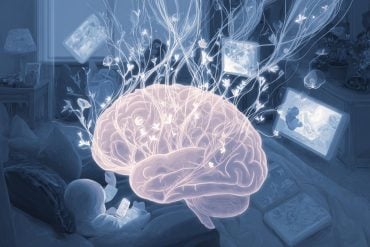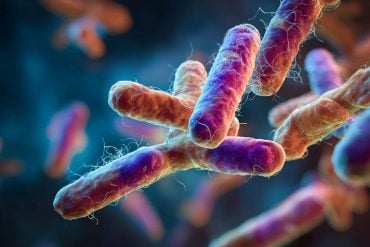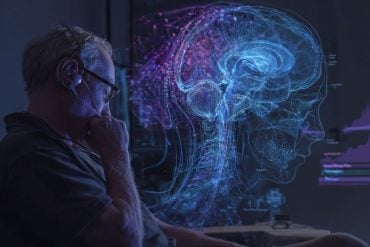Summary: Researchers have developed a new tool, bimodularity, that adds directionality to community detection in networks. Unlike traditional methods that only cluster nodes, this approach groups edges, making it possible to distinguish senders from receivers and uncover bicommunities.
Applied to traffic flow, social networks, or even brain activity, it reveals both who belongs together and how information moves. In tests on the C. elegans neural network, the algorithm not only aligned with known anatomy but also uncovered new functional groupings, pointing to exciting applications in neuroscience and beyond.
Key Facts:
- Edge-Based Clustering: Bimodularity clusters edges rather than nodes, capturing the direction of flow.
- Bicommunities: It identifies paired communities of senders and receivers, revealing influence and interaction.
- Proven in Neuroscience: The method organized the C. elegans neural network with precision and uncovered new pathways.
Source: EPFL
As summer winds down, many of us in continental Europe are heading back north.
The long return journeys from the beaches of southern France, Spain, and Italy once again clog alpine tunnels and Mediterranean coastal routes during the infamous Black Saturday bottlenecks.
This annual migration, like many systems in our world, forms a network—not just of connections, but of communities shaped by shared patterns of origin and destination.

This is where network science — and in particular, community detection — comes in. For decades, researchers have developed powerful tools to uncover communities in networks: clusters of tightly interconnected nodes.
But these tools work best for undirected networks, where connections are mutual. Graphically, it looks like these node maps that most of us have already seen:.
These clusters can mean that a group of people are all friends on Facebook, follow different sport accounts on X, or all live in the same city. Using a standard modularity algorithm, we can then find connections between different communities and begin to draw useful conclusions.
Perhaps users in the fly-fishing community also show up as followers of non-alcoholic beer enthusiasts in Geneva. This type of information extraction, impossible without community analysis, is a layer of meaning that can be leveraged to sell beer or even nefariously influence elections.
When it comes to directed networks — where influence, information, or traffic flows from one point to another — the concept of a “community” becomes much harder to define. Existing methods often ignore direction or use it inconsistently.
A new work out of EPFL and University of Geneva redefines what a community means in a directed graph — capturing both who belongs together and how information flows between them.
Enter bimodularity. By using a clever mathematical maneuver, researchers at Dimitri Van De Ville’s Laboratory of Medical Image Processing and Analysis have broken the code. In one elegant, algorithmic sweep, they have added the ever-elusive directionality to network analysis. In other words, they could now detect not only which cities empty out in summer, but where these communities tend to go to find a beach and parasol.
“With bimodularity, we can finally distinguish senders from receivers in a network. That means finer-grained detail in how communities interact — who’s sending, and who’s receiving,” says Van de Ville.
And when we can detect who is sending and receiving, we can discover where someone is going — or who is following and who is being followed.
Bimodularity allows for bicommunity detection
“What truly sets this method apart is how it identifies communities — not by clustering nodes, as is typically done, but by clustering edges,” says Van De Ville. In other words, instead of asking which individuals belong together, the algorithm asks which interactions behave similarly in terms of directionality.
This edge-based approach allows the researchers to reveal pairs of communities: one that sends information and one that receives it — a new organizational structure they call bicommunities.
We now not only have the community of nodes represented by red, blue and yellow clusters with conventional community detection, but we also can detect a second type of community represented by the directional arrows green, orange and purple.
This is an important new layer of information, for we can now know who is connected in each community as well as if they are equally part of another community of senders or receivers, influencers or followers, commuters or vacationers.
And while this new discovery has not arrived in time to save us this year from the summer traffic jams, the researchers are optimistic about its imminent implementation in network analysis for a wide swath of applications.
To test the theory, they applied it to a well-known data set of neuronal activity that comes from the roundworm C. elegans. The new algorithm not only organized the neural network in a way that perfectly lines up with the anatomical data, but it also even revealed certain new groupings of neurons that shed light on functionality within the nervous system.
“What’s exciting is that bimodularity doesn’t just confirm the known flow from sensory input to motion — it also reveals the intermediate steps in between, like sensory to processing and processing to motion.
“These could point to causal pathways, which opens up new possibilities for interpreting how information moves through the nervous system. It could, for example, help us understand how brain plasticity reorganizes the network to restore function after a stroke,” says first author and PhD student Alexandre Cionca.
About this AI and neuroscience research news
Author: Michael Mitchell
Source: EPFL
Contact: Michael Mitchell – EPFL
Image: The image is credited to Neuroscience News
Original Research: Open access.
“Community detection for directed networks revisited using bimodularity” by Dimitri Van De Ville et al. PNAS
Abstract
Community detection for directed networks revisited using bimodularity
Community structure is a key feature omnipresent in real-world network data. Plethora of methods have been proposed to reveal subsets of densely interconnected nodes using criteria such as the modularity index.
These approaches have been successful for undirected graphs but directed edge information has not yet been dealt with in a satisfactory way.
Here, we revisit the concept of directed communities as a mapping between sending and receiving communities. This translates into a definition that we term bimodularity.
Using convex relaxation, bimodularity can be optimized with the singular value decomposition of the directed modularity matrix.
Subsequently, we propose an edge-based clustering approach to reveal the directed communities including their mappings.
The feasibility of the framework is illustrated on a synthetic model and further applied to the neuronal wiring diagram of the Caenorhabditis elegans, for which it yields meaningful feedforward loops of the head and body motion systems.
This framework sets the ground for the understanding and detection of community structures in directed networks.






